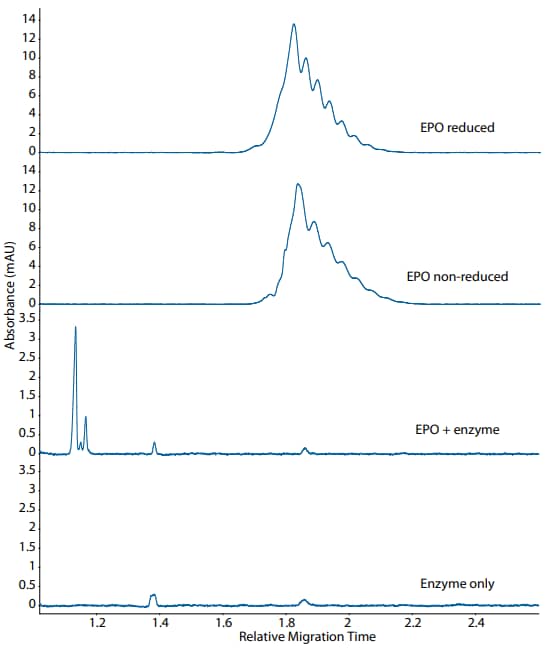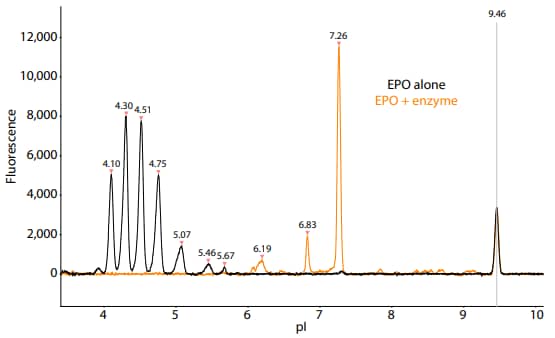Analysis of Erythropoietin by Maurice
Summary
Erythropoietin (EPO) is a hormone that promotes the formation of red blood cells. EPO is used for a variety of clinical indications where red blood cell levels decline.
EDQM catalogue number
Erythropoietin: E1515000, Batch 4
Maurice CE-SDS Method
Sample preparation: Due to the glycosylation of EPO, the apparent molecular weight can appear larger than expected. Following the deglycosylation protocol described here, EPO can be observed at the expected molecular weight.
Running conditions: Samples were injected for 40 seconds at 4600 V, followed by a 35-minute separation at 5750 V.

Maurice icIEF Method
Sample preparation: EPO was prepared as described in the deglycosylation protocol prior to analysis by IEF.
EPO Deglycosylation Procedure
Reagents
- Neuraminidase (Sigma Aldrich, PN 10269611001)
- Protein Deglycosylation Mix II (New England BioLabs, PN P6044S)
Method
- Reconstitute EPO by adding 100 µL 0.5X PBS to the vial, and mix well to make a final EPO concentration of 1 mg/mL.
- Transfer 50 µL of the EPO solution (~50 µg EPO) to a 0.6-mL Eppendorf tube. Add 5 µL of Protein Deglycosylation Mix II and 10 µL of neuraminidase (0.1 units).
- Incubate the solution from step 2 at 37 °C for 24 hours.
- Cool the solution down on ice for 5 minutes.
- Dilute to 0.4 mg/mL in ampholytes.
Ampholyte solution: Pharmalytes 2.5–5 (3.25%), Servalytes 3–4 (0.5%) and 3–10 (0.25%) containing 4 M urea
Running conditions: 1 minute at 1500 V, 6 minutes at 3000 V
pI markers: 3.59 and 9.46
Imaging: Fluorescence (20 seconds)
